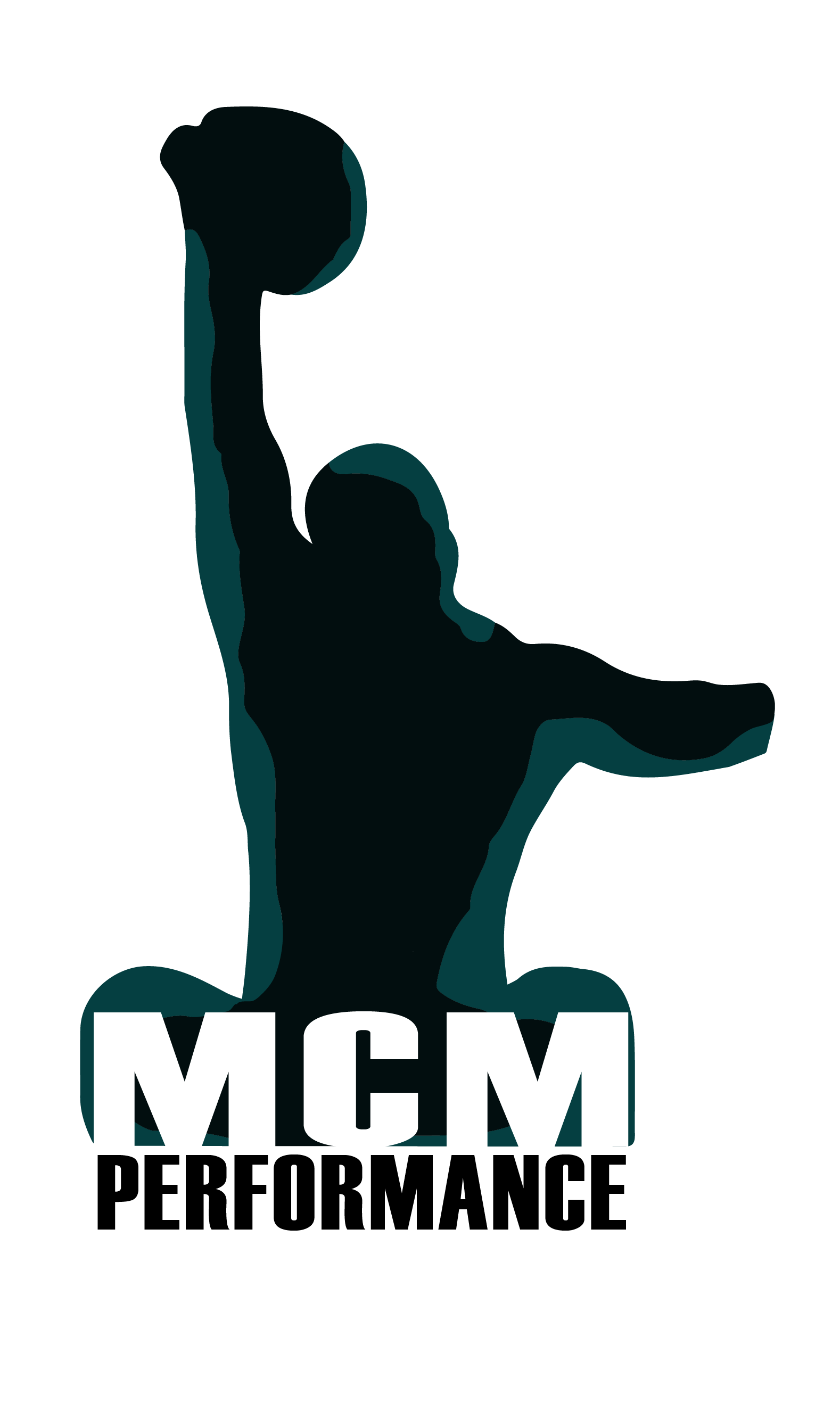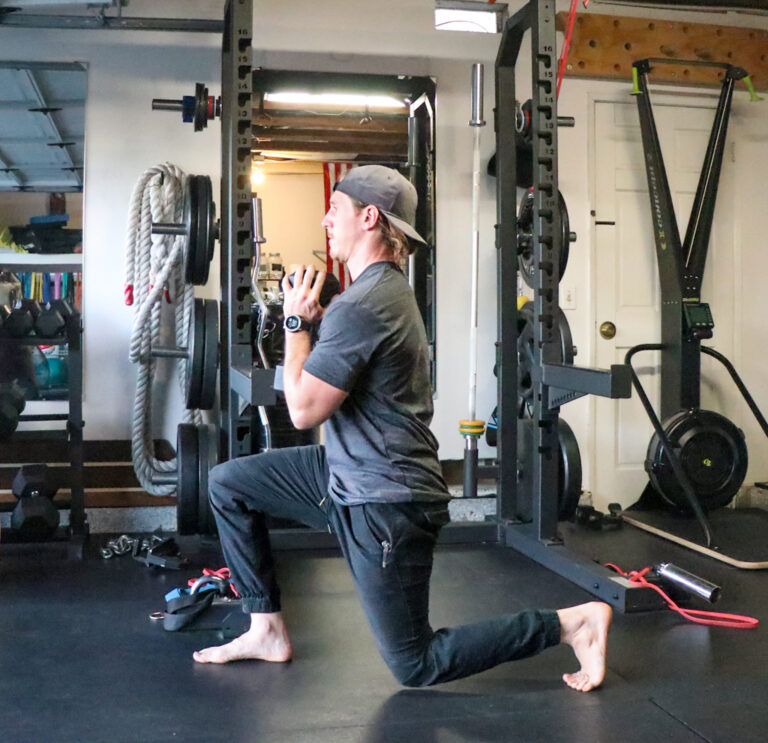The Hinge
Foundational movement patterns are what you do or are supposed to be doing on a daily basis. They consist of the most basic movements and are involved in more complex movements. I’m talking about Hinge, Lunge, Squat, Push, Pull, and Carry.
The Hinge isn’t just a dating app, it’s what you do when you take a bow, or maybe a little more relatable is what you do when you run straight into a shopping cart and try not to get hit at the last second. Hinging should come naturally, but when you’re tight and stiff around your core muscles from too much sitting, then you might find it isn’t as easy as it is simple.
The human hinges like a door. In this analogy your legs would be the frame, your torso would be the door, and your hips represent the hinge. It’s easy to see if you got it or not.
The Assessment
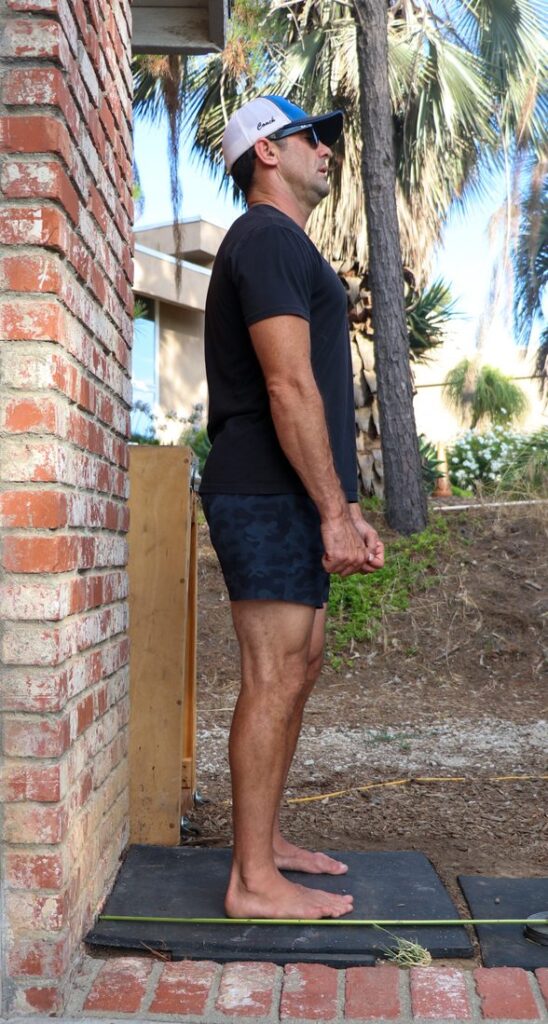
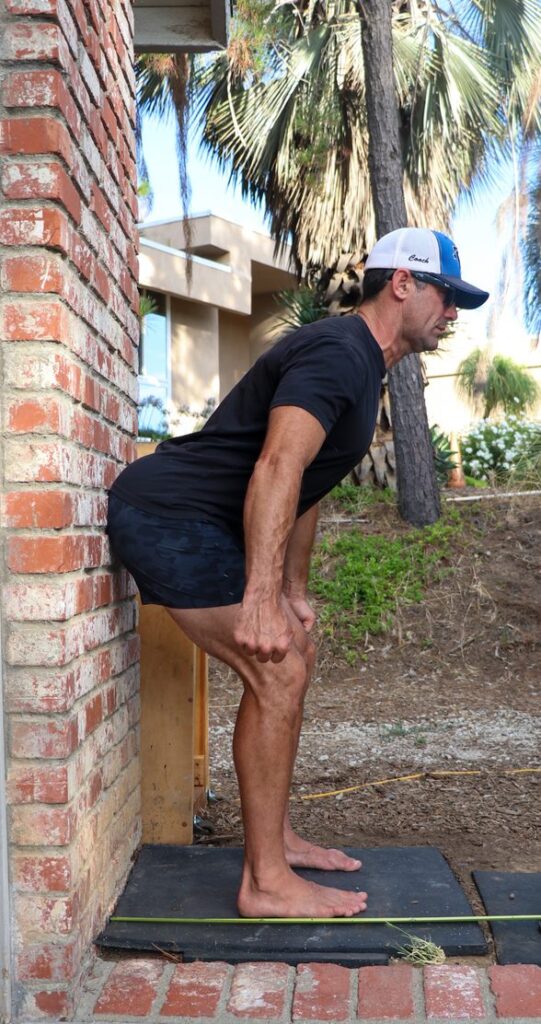
In order to see if you have an adequate hinge, assess yourself with the following steps:
- Set a tape measure or ruler on the ground starting at the wall.
- Stand facing away from the wall, your feet about hips width apart, heels at about 6-10” from the wall
- Keep your feet flat, spine neutral, and maintain alignment at the knee (don’t let them collapse or bow out)
- Sit your hips back until both of your sit bones touch the wall
- Keeping full foot contact with the ground throughout the entire movement: extend your hips and legs, standing back up straight.
- Move forward an inch or 2 depending how easy it was.
- Repeat until the point at which you lose balance, or you cannot stand out of the hinge properly. Just shy of that point is the distance of your maximum functional range of motion for this movement.
Important: If you fail to complete a proper rep under control at a minimal 10-12” from the wall then generally I would suggest you stop deadlifting for the time being and address your mobility issues. It is important that you make sure you have the mobility necessary to perform a movement properly, under control, at bodyweight. Once you can do that, the next step is adding that pattern into your strength training and progressively overloading it.
Hinge Exercises for Strength
Using the hinge in your daily life might look like a single leg RDL to pick up a sock or shoe. If you have steps in your house then you either use a hinge pattern or you compensate from somewhere else to get up and down them. Picking up heavy items like when moving a couch requires a strong application of a hinge as well as many other patterns like pull, push, and carry.
Strength exercise examples involving a hinge dominant pattern:
- Deadlift – all variations, anything you pick up from the ground.
- Back Extension
- Good Morning
- RDL
Power exercise examples involving a hinge dominant pattern:
- KB Swing
- Power Clean
- Row Erg
Cues for a Better Deadlift
Because the Deadlift is the king of full body strength movements, you should know how to do it. Even if, and especially if, you don’t lift heavy things on a weekly basis or ever plan to. My buddy Jeff demonstrates what proper setup and execution of a traditional barbell deadlift should look like.
Set-up:
- Feet hip width apart, Grip outside of knees
- Elbows locked
- Shoulders packed – Pull them down away from your ears
- Squeeze lemons in the backs of your armpits
- Chin tuck – hold a tennis ball under your chin
- Brace, “Pull the slack”, Inhale
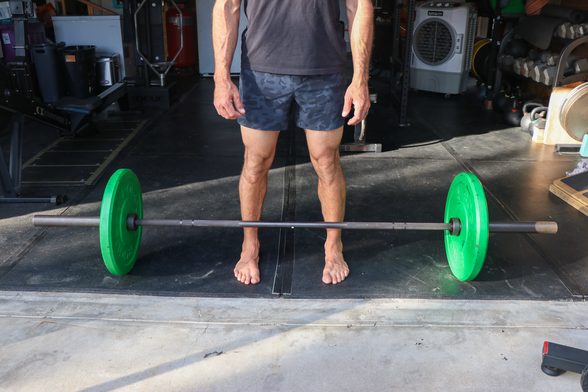

Lift:
- In one smooth motion, stand up.
- From the ground to the knees: Leg press
- From the knee’s to the hips: Hip extension
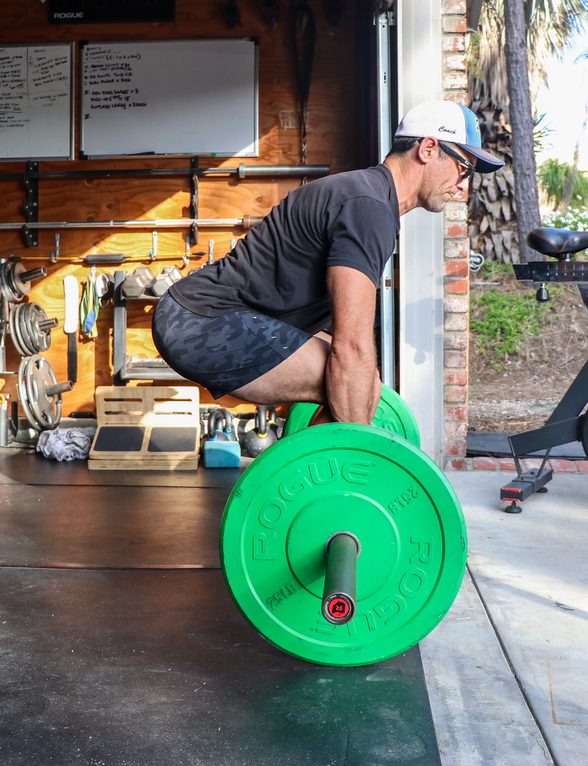
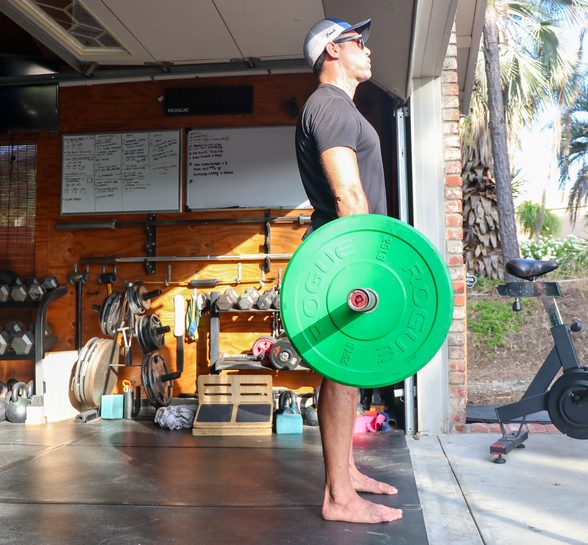
Finish:
Reverse the sequence – knees bend ever so slightly as the hips travel back into a deep hinge, maintain a neutral spine as you cross over your knees, bending them after the bar passes until you reach the ground, while maintaining a good grip on the lemons.
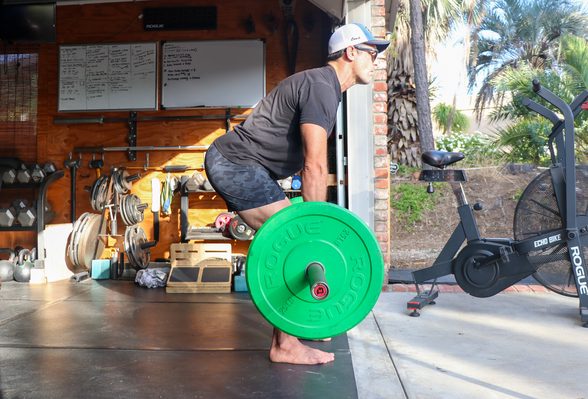
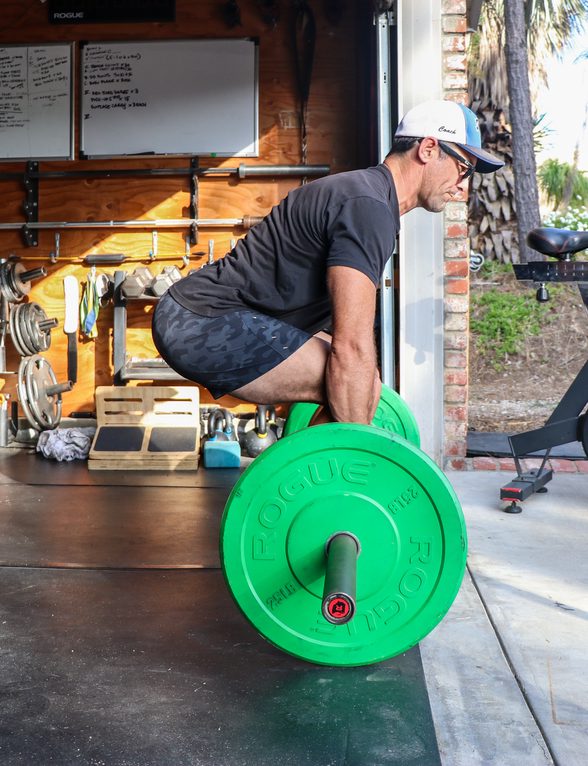
Practice at Home: 10 Day Hinge Challenge
Why? Because 30 days is too long for most of us and I want you to try it. You need to practice hinging before you can attempt a deadlift of any significance. You need a dowel or broomstick to do this. Instead of taking someone’s head off at the gym, it’s probably better that you do this from the safety of your own home until you’re confident you’re ready to lift at least 100 lbs.
First test your hinge distance and record it. (Using the assessment above)
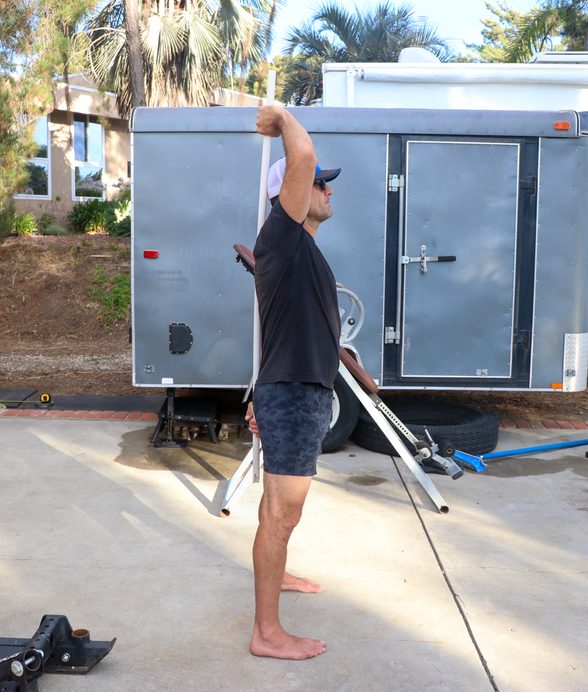

- Begin with a dowel, line it up vertically along your backside making sure to keep points of contact with your 1) Butt 2) Mid Back and 3) Back of head
- Keep full contact with your feet and the ground, sit your hips back until you feel a stretch in your posterior chain, breathe for a second, then extend your hips forward locking in fully upright.
- Repeat this 20 times a day for 10 days.
Retest your hinge after 10 Days and let me know what happened!
After the dowel phase you can progress to a duffle bag or backpack loaded with water, books, sand, etc.
Advanced: 21 Day Deadlift Challenge
For my more experienced athletes, take this 21 Day Deadlift Challenge. We will be doing Traditional Barbell Deadlift workouts only in order to focus on motor learning and improving technique. To find the number that you base all of your percentages off of, use 90% of your estimated 1 rep max deadlift. Take into account your current training and factor this in accordingly. Heavy Deadlifts are very taxing on the CNS. You need to be eating enough, drinking enough, mobilizing and sleeping enough in order to recover. I cannot emphasize this enough.

After completing 21 days and resting for a day or two, retest your 1 Rep Max and let me know what happened.
Resources:
For education and support backed by decades of science and application:
- www.DrJohnRusin.com – Dr. John Rusin is an online coach. The 6 Foundational patterns are his brainchild. I have learned a lot from him, I apply some of his teachings in my own training and incorporate them into my own processes. I hope you find his work helpful too.
- The American College of Sports Medicine: www.ACSM.org offers peer-reviewed journals, official positions related to sports medicine and exercise science, books, podcasts, blogs on trending topics, and more.
- ACSM Sets the gold standard for physical activity and health. American College of Sports Medicine. Physical activity guidelines. [cited 2022 October 3]. Available from: https://www.acsm.org/read-research/trending-topics-resource-pages/physical-activity-guidelines
- Functional Movement Systems: www.functionalmovement.com has a movement podcast and tons of great articles and other free resources available. The FMS certifies healthcare professionals in systems that help people to improve quality of movement by first moving well, then moving often.
- Book: “5/3/1” By Jim Wendler: The simplest and most effective training system for raw strength. A close friend of mine showed me this years ago and the philosophy proves itself true for people of all ages.

